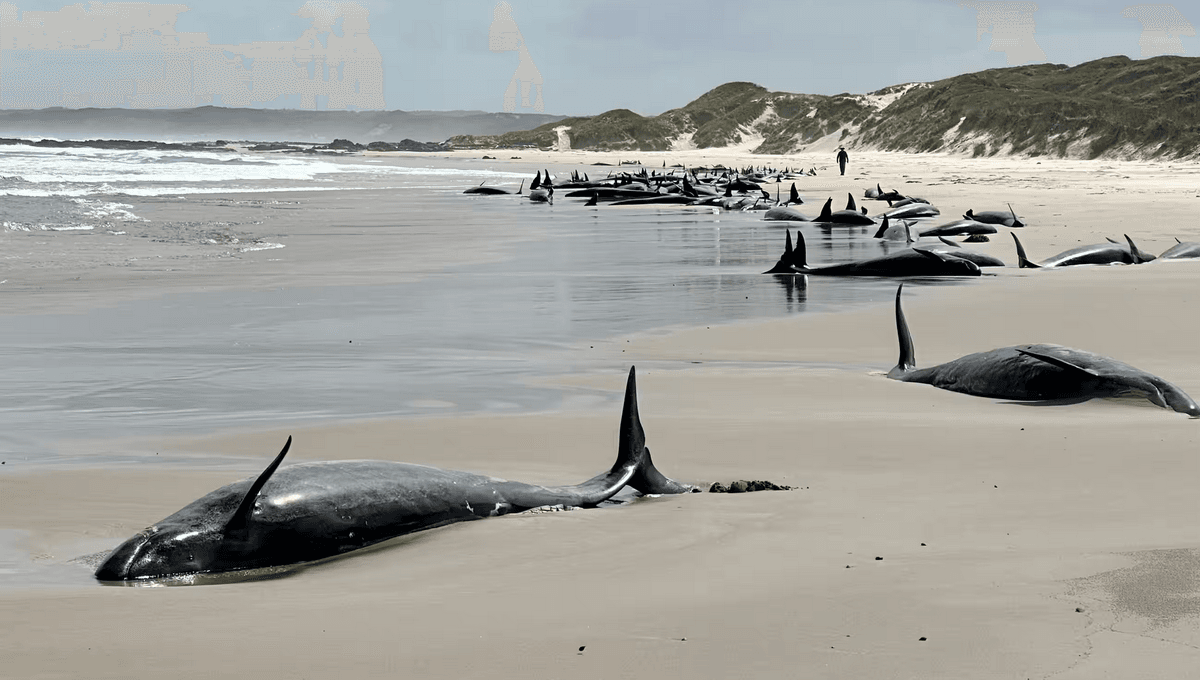
More than 150 cetaceans have been stranded near the north-western tip of Tasmania, and the Marine Conservation Program thinks even those currently still alive are unlikely to be saved.
ADVERTISEMENT GO AD FREE
The stranding occurred on a beach near Arthur River, a village with a population of just 32. Nearby towns such as Marrawah are larger, but are still lacking in suitable equipment for addressing strandings. Onlookers can sometimes do more harm than good in cases like this and Tasmania Parks and Wildlife Service have announced on Facebook that the relevant area of the beach and nearby campground are closed to the public. To complicate issues further, there is an active bushfire response in the area.
“The moment a whale or dolphin strands, the clock of survival starts ticking. The longer they remain on land, the less of a chance they may have to be successfully returned,” Dr Vanessa Pirotta of Macquarie University said in a statement.
“We don’t yet understand why whales and dolphins strand. Tasmania has proven to be a hotspot location for seeing mass strandings like this. Perhaps it’s the geographical location, which make it difficult to navigate around. This is just one of many theories that may help understand why this happens.”
The species of the stranded animals has yet to be confirmed, but they are thought to be false killer whales, (Pseudorca crassidens), which are actually a type of dolphin whose skull shape sometimes creates confusion with orcas. False killer whales are highly social (including with other species) and form large pods, although this is large even by their standards.
There have been no false killer whale strandings in Tasmania for around 50 years, but other species strand on the Island frequently, including 480 pilot whales in 2020, of which about 100 were saved.
More recently, another pilot whale stranding involved 230 whales, just days after 14 sperm whales were stranded in the state. Late last year, three larger whales stranded on Flinders Island, also part of the state.
ADVERTISEMENT GO AD FREE
The remoteness of the location delayed their discovery until late on Tuesday, and the dolphins are thought to have been stranded for 24-48 hours. At least half the animals are thought to already be dead, and the Marine Conservation program has stated: “It’s currently expected all remaining alive whales will be euthanised.”
Source Link: Prospects Grim For 157 False Killer Whales Stranded In Tasmania – The Largest In 50 Years